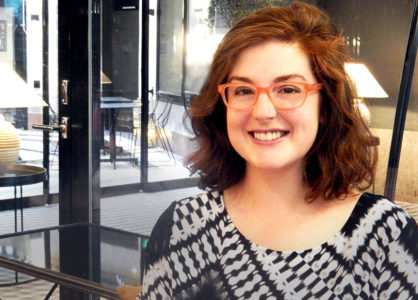Will the Courts’ New Normal Bend Towards Justice + Equity — or Away?
Margaret Hagan is an attorney and the Executive Director of the Legal Design Lab and a lecturer at Stanford’s d.School. Olivia Rosenthal is a Stanford Law student and fellow at the Legal Design Lab. The Legal Design Lab has partnered with courts and legal aid groups to create new eviction summons, guides, and technology tools to reduce default rates and improve court outcomes. The Lab is currently partnered with the National League of Cities to lead a cohort of city leaders across the country to address the eviction crisis.
There is a new normal in our state courts as they reopen across the country, with more technology, new rules of operation, and huge caseloads to get through. Crowded hallways, filled with people anxiously waiting for their hearing to be called, have been replaced with Zoom meeting rooms. Large binders and plastic bags of court papers are now digital document folders and online filings. But it is not clear if this new normal will be good or harmful for the millions of people who must go to court to deal with housing, debt, and family problems. This summer will be a key moment to decide if this new version of the civil justice system will bend more towards — or further from — equity and equal access to justice for all.
In past years, courts had been dabbling with innovation pilots, but the pandemic has accelerated the courts’ willingness to adopt tech that can make the courts more efficient — and possibly to make access to justice and equity more of a priority in the justice system.

The courts’ new normal has two other drivers beyond the need for social distance and remote tech. First, there is likely to be huge waves of new lawsuits coming into the courts, growing out of the financial crisis. As people lose financial stability, this is likely to show up in overwhelming dockets of eviction and debt collection cases filed in courts. The courts are going to need new strategies to deal with this increase — and to protect the rights of people whose housing, finances, and family life could be upended by these cases.
The other driver is an increasing awareness by courts’ leadership of the justice system’s role in the country’s issues of racial and economic equity. Even before the pandemic, most low-income Americans weren’t able to get adequate legal assistance to deal with civil justice problems around housing, finance, family, and health. Especially in the wake of the recent wave of police brutality and racist acts of violence, some state judges are recognizing and publicly grappling with their own role in propagating and upholding racist and elitist structures of power. State courts are open to change.
But what will this newly-changed civil court system look like? And more importantly — will it be harmful to the millions of people who are at risk of homelessness and financial devastation as they are brought to court by landlords and debt collectors?
On one level, the technology changes happening in the new normal are exciting, with their promise of reducing the burden of coming to court and defending oneself. Through our work with legal design and access, we have spent hours interviewing people coming to court to deal with traffic tickets, guardianship of their grandkids, or landlord problems. Again and again, we have heard just how hard it is to get there: the babysitters, transportation, parking, and days off of work that had to be arranged. A tech-driven court system may make it easier to show up to crucial court hearings, make obtuse court processes more navigable, and empower more people to take full advantage of their legal protections.

But, there is a huge risk that this new normal could worsen people’s access to the justice system — especially if they are on the wrong side of the digital divide. Recent reports have highlighted how some courts are doing digital cattle-calls of tenants facing eviction, and all those who haven’t managed to make the online meeting are given a default judgment of eviction against them. Even when a person does call into a remote eviction hearing, it can go by quickly and without guidance on how to raise defenses, show evidence, or get one’s story across.
As courts go more tech-based, these early reports of access issues may become more common, especially for people who don’t have strong internet connections, video-friendly devices, or expertise in online meetings. Well-resourced repeat players in the court, like plaintiffs and their lawyers, will quickly become experts in remote hearings, and be able to speak more, present evidence correctly, bring witnesses to testify, and get to favorable outcomes. All of these crucial legal tasks are hard enough to do in-person, and may be even more intimidating for a person without a lawyer to do when they’re suddenly dropped into an online court hearing.
Now is a crucial time for courts’ new normal to be defined not just around efficient technology, but around equity and access to justice. That means including more diverse communities in defining how these seemingly technocratic decisions of remote hearing procedures are set up. These procedural details and design choices have huge effects on people’s housing and financial stability, and it’s crucial to experiment with how to design remote courts in ways that are accessible, empowering, and equitable. To do this, courts need to engage with people beyond the ‘experts,, and learn from users’ experiences and ideas to design a court system that works not just for lawyers but for everyone.
We also must gather data about what the new normal of courts mean for equity and access. Courts and researchers must track whether remote hearings result in more people missing their court dates, losing their cases, or not being able to speak as much as the other party. This should be tracked with attention to different racial groups, people who don’t speak English as their first language, and people with disabilities.
This pandemic has forced change upon a court system that has been resistant for decades. Now is the time for courts to define a civil justice system that is designed thoughtfully, inclusively, and with equity at its center.
